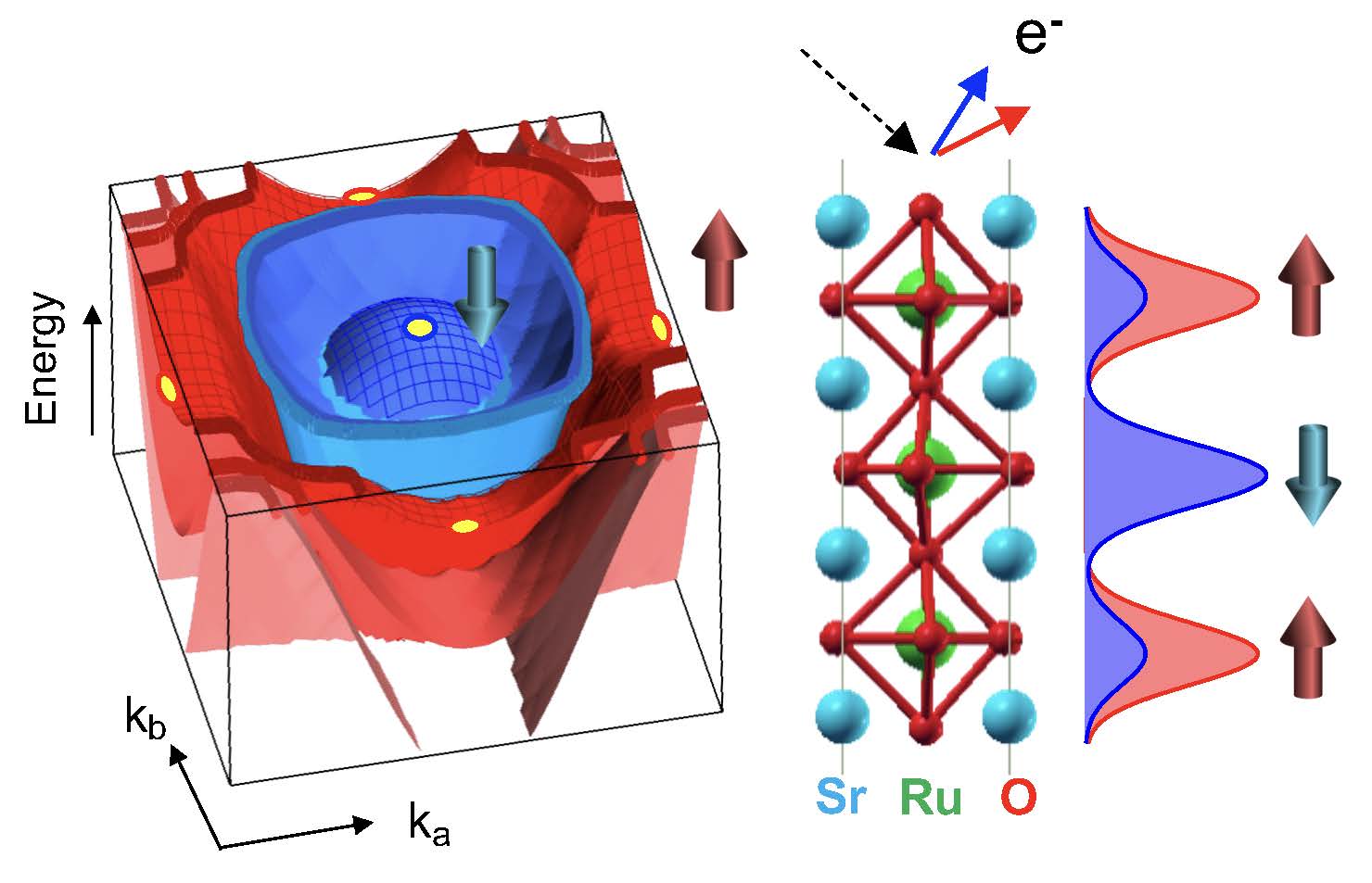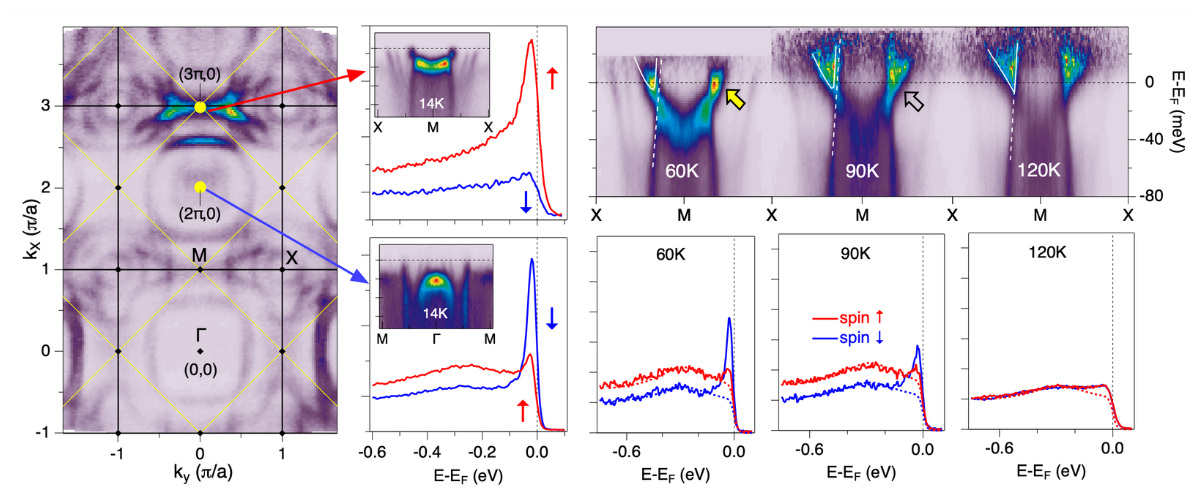SCIENTIFIC ACHIEVEMENT
Researchers revealed how electrons with different spins behave in distinct layers of a three-layer magnetic material, helping to explain its unusual magnetic behavior.
SIGNIFICANCE AND IMPACT
The results deepen the field’s understanding of how magnetism emerges in layered materials, which are important for future magnetic technologies and quantum electronic devices.

Architecture for 2D magnetism
The perovskite strontium ruthenate family (Srₙ₊₁RuₙO₃ₙ₊₁) consists of layered materials that stack into different configurations. When n is large, the compound has a three-dimensional (3D) structure. For smaller n, the material forms quasi-two-dimensional (2D) n-layer slabs of RuO6 octahedra.
While the 3D compound (SrRuO₃) is a conventional ferromagnet, the 2D single-layer version (Sr₂RuO₄) is a superconductor. Between these extremes lies Sr₄Ru₃O₁₀, a triple-layer compound that combines the desirable properties of ferromagnetism and two-dimensionality, a current high interest research area. This structure also possesses mysterious ‘metamagnetic’ behavior where a magnetic field can trigger an abrupt change in its in-plane magnetism.
Revealing the magnetic architecture
An early experimental study of the Sr4Ru3O10 band structure using angle-resolved photoemission (ARPES) measurements inspired a collaboration with theorists within the African School for Electronic Structure Methods and Applications. The theoretical calculations, which predicted strong spin-polarization of bands in the ferromagnetic phase, led to an experimental collaboration at the Advanced Light Source (ALS).
The team first performed a broad ARPES survey of the photoemission intensities on Sr4Ru3O10 samples at ALS Beamline 4.0.3 to determine the optimized angles and photon energies, which were then used for the spin-resolved measurements at Beamline 10.0.1. The spin-resolved ARPES instrument is equipped with 3D, very-low-energy electron diffraction (VLEED) spin detectors, enabling the collection of electrons with different spin components.
Electron traffic jams
The ARPES data revealed two separate narrow electronic bands with opposite spin orientation. The sharp spectral peaks, called van Hove singularities (vHS), indicate where an electron ‘traffic jam’ develops due to a high concentration of electron states. The comparison of the ARPES data to theoretical calculations identified the electron orbitals of the two vHS points. Their different orbital symmetries then determine that the points are spatially separated.

Identifying the tipping point
At low temperature, the spin-up big vHS band is broken into smaller low-energy scale mini-vHS points. These points are sensitive to external magnetic fields and mark the ‘tipping point’ for the abrupt metamagnetic transition. This tipping point provides the ‘switch’ that triggers an abrupt change in the compound’s in-plane magnetism. The research team determined that the mini-vHS ‘trigger’ points only occur in the outer layers of the compound and that they disappear above 60 K, consistent with the temperature-dependent evolution of the magnetic field-induced ‘jump.’
The ability to manipulate vHS energies by magnetic fields, temperature, or other perturbations opens new prospects to control magnetism strategically. The detailed microscopic understanding of this effect in Sr₄Ru₃O₁₀ may benefit future attempts to design materials with abrupt switchable properties that could be used in quantum technologies for developing next-generation magnetic devices.

Contacts: Prosper Ngabonziza and Jonathan Denlinger
Researchers: P. Ngabonziza (Louisiana State University); J.D. Denlinger, A.V. Fedorov (ALS); G. Cao (University of Colorado); J.W. Allen (University of Michigan); G. Gebreyesus (University of Ghana); and R.M. Martin (Stanford University).
Funding: U.S.-Africa Initiative in Electronic Structure (USAfrI), supported by the American Physical Society Innovation Fund, the African School for Electronic Structure Methods and Applications, funded by the Abdus Salam International Centre for Theoretical Physics, and National Science Foundation Division of Materials Research. Operation of the ALS is supported by the US Department of Energy, Office of Science, Basic Energy Sciences program.
Publication: P. Ngabonziza, J.D. Denlinger, A.V. Fedorov, G. Cao, J.W. Allen, G. Gebreyesus, and R.M. Martin, “Layer-dependent spin-resolved electronic structure of ferromagnetic triple-layered ruthenate Sr4Ru3O10,” Physical Review B 111, 115146 (2025). doi: 10.1103/PhysRevB.111.115146
ALS SCIENCE HIGHLIGHT #526